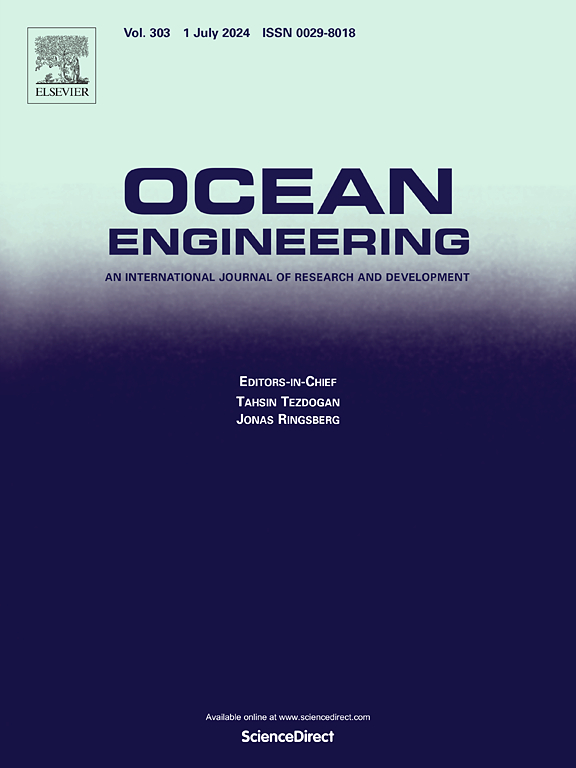NACA0012型水翼流声相关机理及声源分布数值研究
IF 5.5
2区 工程技术
Q1 ENGINEERING, CIVIL
引用次数: 0
摘要
水翼是螺旋桨的一种简化模型。其升力面也广泛应用于潜艇帆、舵等结构。针对水翼声源分布及流声关联机理,选择NACA0012水翼作为研究对象。采用大涡模拟(LES)和声学类比方法研究了流场和声场的流动特性。采用双网格技术加快计算速度。通过实验验证了数值计算结果。结果表明,采用双网格技术,计算效率提高了30倍以上,且精度没有损失。利用交叉谱、第三代涡识别技术和DMD分析了壁面压力波动和涡结构对辐射噪声的影响机理。通过计算跨谱相关系数,发现在n阶峰值频率处相关性更强。在吸升方向偶极子压力和壁面压力均有极值。通过动态模态分解(DMD),发现涡旋与Lighthill源的主导模态相似。四极子的峰值频率对应于旋涡脱落的高能模式。本文章由计算机程序翻译,如有差异,请以英文原文为准。
Numerical study of flow-sound correlation mechanism and sound source distribution for NACA0012 hydrofoil
Hydrofoil is a simplified model of the propeller. Its lifting surface is also widely used in the submarine sail, rudder and other structures. Focus on hydrofoil sound source distribution and flow-sound correlation mechanism, NACA0012 hydrofoil is selected as the research object. Large eddy simulation (LES) and acoustic analogy is used to study the flow and sound characteristics. Dual-mesh technology is applied for accelerating the computation. The numerical results are validated by experiments. It is found that the computational efficiency is improved by more than 30 times with no loss of accuracy using dual-mesh technique. Cross spectrum, third-generation vortex identification technique and DMD are used to analyze the mechanism of wall pressure fluctuation and vortex structure on the radiated noise. By calculating the cross-spectral correlation coefficients, it is found that the correlation is stronger at the nth order peak frequency. Both of dipole and wall pressure have extreme values in the suction and lifting direction. With dynamic mode decomposition (DMD), it is found that the vortices are similar to the dominant mode of the Lighthill source. The peak frequency of quadrupole corresponds to the high-energy mode of the vortex shedding.
求助全文
通过发布文献求助,成功后即可免费获取论文全文。
去求助
来源期刊

Ocean Engineering
工程技术-工程:大洋
CiteScore
7.30
自引率
34.00%
发文量
2379
审稿时长
8.1 months
期刊介绍:
Ocean Engineering provides a medium for the publication of original research and development work in the field of ocean engineering. Ocean Engineering seeks papers in the following topics.
 求助内容:
求助内容: 应助结果提醒方式:
应助结果提醒方式:


